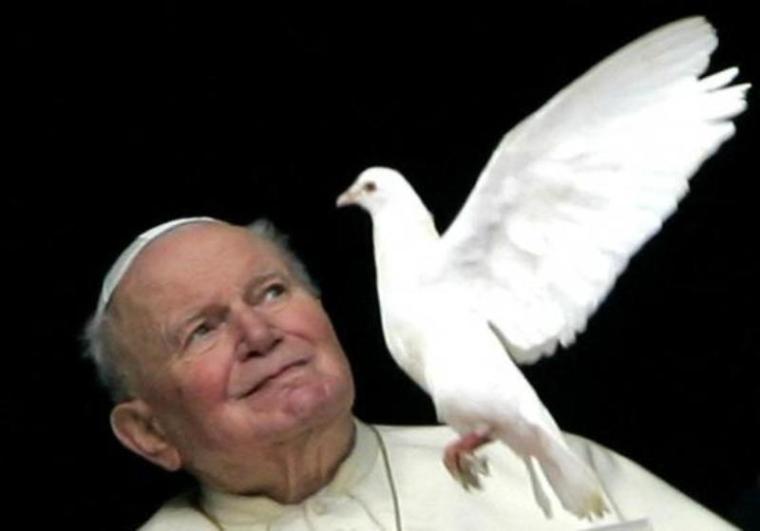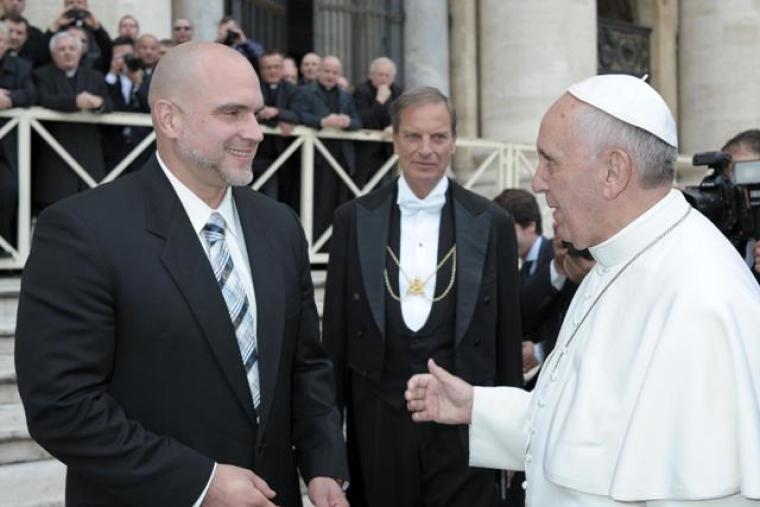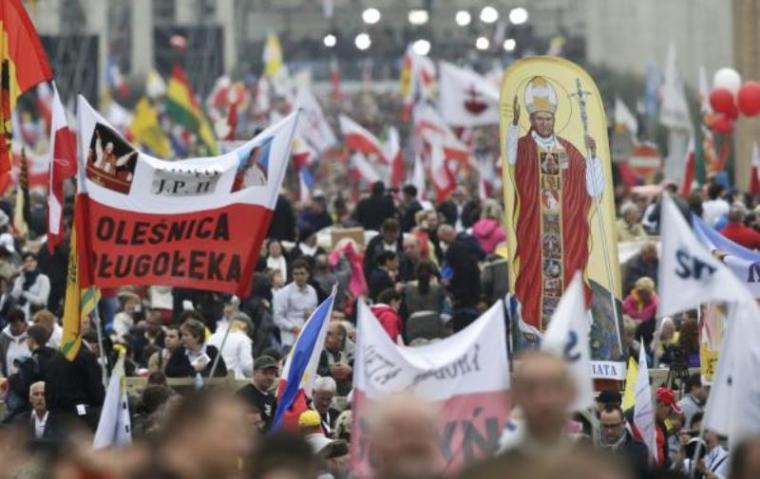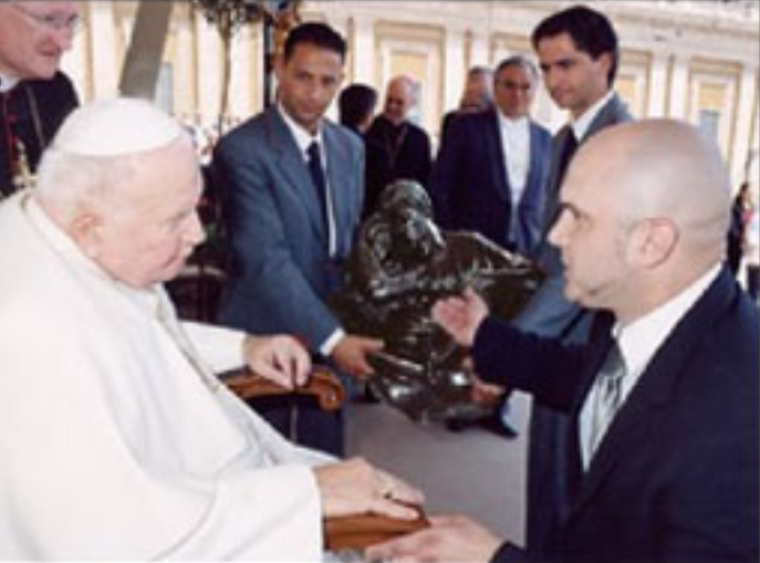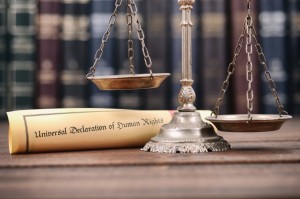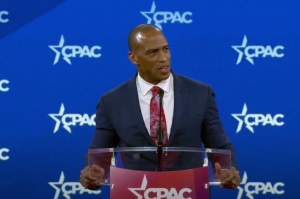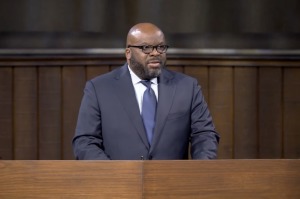Canadian Sculptor Tim Schmalz, Who Met Pope John Paul II, Remembers His Impact Prior to Sainthood Ceremony
More than half a million people gathered in St. Peter's Square Sunday to join Pope Francis and Retired Benedict XVI for holy mass and the sainthood ceremony for Popes John XXIII and John Paul II.
Pope Francis canonized the two post-World War II era pontiffs, Pope John XXIII, who reigned from 1958 to 1963, and called for the modernizing Second Vatican Council and allowd for Mass to be celebrated in local languages instead of Latin; and Pope John Paul II, who reigned for nearly 27 years and is credited for working with U.S. President Ronald Reagan and British Prime Minister Margaret Thatcher to bring down Communism.
Canadian sculptor Tim Schmalz had the honor of meeting Pope Francis and Pope John Paul II and told The Christian Post that both pontiffs have encouraged the 1.2 billion Catholics around the world and Christians of all denominations to help the poor and marginalized in society.
Schmalz had the opportunity to meet Pope John Paul II at the Vatican in 2004 when he took the original bronze model of his popular piece of the holy family (Mary, Joseph and Jesus), called "A Quiet Moment" to present to the pope. The sculpture is among the largest in Bethlehem, which was installed in the Holy Land in 2000 for the anniversary of Christianity.

The Canadian Bishops, especially Bishop Ustrzycki, arranged for Schmalz to meet Pope John Paul II the summer before he died. "That was really touching," Schmalz told CP. "If I could've presented only one sculpture to the Holy Father, it would've been that piece."
"I think one of the most powerful messages that Pope John Paul II left with us is the dignity of life of older, elder people and people who have physical impairments," Schmalz said. "When I met him I noticed that he could hardly even talk, but I saw his eyes, and I saw someone who had compassion and also a lot of intelligence."
He continued, "It's interesting, because although he could hardly move his body, one thing that I did notice is that his hands and his fingers were very active. It was almost like under his skin there was this exciting person that his body just wouldn't let out. That was a great lesson and a great show piece for the world — and that is that your worth does not end when your body starts to fall apart. And it was an amazing message and I was there to witness that."
Schmalz emphasized that each pope has had a different message to share with the world, and he's been working on pieces that reflect some of the ideas that Pope John Paul II brought forth to the world about human sexuality and its relationship toward spirituality and Christianity.
"And now we've had another pope who brings something completely new to the table, as far as his specific character," he added. "It's interesting, because as I talk to some people at the Vatican, some of my friends, they reminded me that the Cardinals knew exactly who they were getting when they chose Pope Francis."
"For the whole world it's a surprise to see a pope who refuses to sleep in the palace rooms that are normally appointed to the pope; and who admonishes a German Bishop and suspends him for lavishly renovating his residence. It's not only Pope Francis, it's the Church and the Cardinals who got him there and who knew what they were getting," Schmalz explained.
During the double papal canonization at St. Peter's Square huge tapestries of Pope John XXIII and Pope John Paul II were displayed on the facade of the basilica behind Pope Francis who proclaimed in his address: "These were two men of courage ... and they bore witness before the Church and the world to God's goodness and mercy."
"They lived through the tragic events of that (the 20th) century, but they were not overwhelmed by them. For them, God was more powerful; faith was more powerful," he continued, according to Reuters.
"We declare and define blessed John XXIII and John Paul II to be saints and we enroll them among the saints, decreeing that they are to be venerated as such by the whole Church," Francis said in his formal proclamation in Latin.
Pope John XXIII was born into poverty, served as a Sergeant and military chaplain during World War I, and helped save the lives of many Jews who were fleeing the Holocaust during World War II by securing their paperwork and visas so they could leave Europe.
Unlike other saints, Pope John XXIII is credited with only performing one miracle, instead of two. His single verified miracle involves Sister Caterina Capitani of the Daughters of Charity, who suffered from a gastric illness that required 14 operations which led to a haemorrhage. She testified that she was healed in 1966 by the pope, who had died in 1963.
Pope John Paul II, many believe, performed two mircales after his death.
"John Paul II performed his first miracle on a French nun with Parkinson's disease in June 2005, several months after he died, while he performed the second miracle on a Costa Rican woman with an aneurism in 2011, six years after his death," according to U.S. News and World Report.
Reuters reports that the crowd Sunday (an estimated 800,000), was so large it stretched back along Via della Conciliazione, the broad, half-kilometer boulevard that starts at the Tiber River.
Schmalz, who was in Rome in November to present a model of his sculpture "Jesus the Homeless" to Pope Francis at the Vatican, will be back in Rome sometime this year for the installation of the life size bronze sculpture, which will likely be placed along an avenue that leads up to St. Peter's Bassicila, if the government of the city of Rome approves the location.
The "Jesus the Homeless" sculpture has been installed outside Catholic and Protestant churches throughout the U.S., and as far away as Perth, Australia.
"For the first time in history a sculpture blessed by the pope is being embraced and permanently installed by all denominations," Schmalz commented.
"I think this is for two principle reasons: A pope who is so authentic in his urging for us to consider the least of our brothers and sisters is appealing to all Christians, and consequently, making what is considered standard Catholic more approachable to the other faiths. And the sculpture itself, which is so different from the usual 'Catholic' statue in its sincere presentation of the Gospels — other denominations that usually pull away from devotional statues are now seeing the benefit of using art to help spread their Christian beliefs and ideas."











